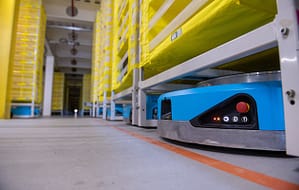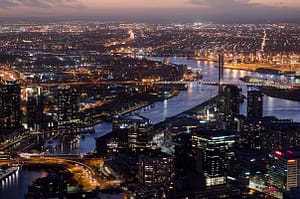The concept of work, a fundamental pillar of our lives, is undergoing a profound transformation. No longer confined to the traditional 9-to-5 workday in a static office environment, the nature of work is shifting towards more flexible and individualised arrangements. Nayiri Keshishi, a lecturer in learning development at the University of Surrey, encapsulates this evolution perfectly: “As more and more companies adopt flexible work arrangements, we can expect to see a shift away from the traditional 9-to-5 workday. Instead, workers will have more control over their schedules, and may be able to work in a way that is most comfortable and productive for them.” This statement reflects a broader trend towards a future where work adapts to the worker, rather than the other way around.
At the heart of this shift is a recognition of the diverse needs and preferences of the workforce, leading to the creation of more dynamic and adaptive work environments. This change is not merely about where we work but how these environments can inspire, facilitate, and enhance our work. Businesses and individuals alike are embracing this change, recognising that the future of work lies in flexibility, adaptability, and a deep commitment to fostering human-centric workplaces. This article explores the emerging trends shaping the future of work, highlighting how office environments are evolving to meet the demands of a world in constant flux. Through insights from experts and the latest research, we delve into the strategies businesses are employing to create workspaces that are not just functional but truly transformative.
The hybrid model: A new standard for office spaces
The hybrid work model, a blend of remote and in-office work, is rapidly becoming the norm across industries. This shift is not just a response to recent global events but a reflection of a deeper, more fundamental change in our understanding of productivity and employee well-being. A recent study highlighted that hybrid work models have been found to reduce employee turnover by 12%, a statistic that underscores the tangible benefits of flexible working arrangements for both employers and employees.
This model represents more than a mere logistical shift; it signifies a cultural transformation towards valuing outcomes over hours spent at a desk. Companies leading the charge in this new standard are not just adapting to change but are actively shaping a future where work can happen anywhere, anytime, without compromising on quality or efficiency. This approach is not without its challenges, requiring a rethink of how office spaces are designed, equipped, and managed to support a fluid, dynamic workforce.
Designing for flexibility and collaboration
In this era of hybrid work, office environments are being reimagined to serve as hubs for collaboration and social interaction rather than traditional workspaces. The inclusion of office pods, meeting pods, and work pods has become a hallmark of this new design ethos. These spaces offer the privacy and quiet needed for focused work while also supporting the need for team collaboration and creativity.
Integrating such elements into office design requires a thoughtful approach to ensure they meet the business’s unique needs. Office pods, for example, can be customised to reflect the company’s brand, culture, and the specific work styles of its employees. Having office pods to suit your business needs makes them not just functional spaces but also symbols of a company’s commitment to supporting diverse work preferences and fostering a culture of innovation.
Sustainability and wellness in the modern office
The importance of sustainability and wellness within the workspace has surged to the forefront of office design, signalling a paradigm shift in how environments are conceptualised to support employee health and ecological responsibility. Ilyas Aslam, Chief Operating Officer at the real estate private equity investment and advisory group Quadrum, captures the essence of this movement, stating, “Employers have embraced their pastoral role and want their teams to feel cared for, with a sense of belonging and community and a focus on their physical and emotional wellbeing. It’s important for retention and attraction, but also for their employer responsibility and brand reputation.” This perspective highlights an evolving workplace ethos where sustainability and wellness are integral to creating spaces that nurture and inspire.
In response, architects and designers are increasingly prioritising natural light, incorporating green spaces, and selecting materials with a minimal environmental footprint. These considerations go beyond aesthetics, aiming to foster a workplace that actively contributes to the well-being of its occupants. By adopting such principles, businesses acknowledge their role in enhancing employee satisfaction and well-being. The move towards spaces that reflect a company’s commitment to sustainability and employee health is not just a trend but a reflection of a deeper understanding of the value of a supportive and healthy work environment in attracting and retaining talent. This evolution of office design reflects a broader commitment to well-being and environmental stewardship, setting new standards for the workplaces of tomorrow.
Technology integration: Enhancing productivity and engagement
The integration of technology into office design is revolutionising the way we work. Smart office solutions, from automated climate control to advanced security systems, are creating environments that are not only more efficient but also more comfortable and safer for employees. This technological evolution extends to the very furniture and fixtures that make up the office, with desks and chairs designed to promote good posture and reduce strain, and meeting rooms equipped with the latest in digital connectivity.
By harnessing the power of technology, businesses can create offices that adapt to the needs of their workforce, offering a seamless blend of physical and digital workspaces. This integration is key to enhancing productivity and engagement, making it easier for teams to collaborate, whether they are in the same room or spread across the globe.
Looking ahead: The office of 2030
As we look towards the future, the office of 2030 will likely bear little resemblance to the traditional office spaces we once knew. With 74% of people willing to learn new skills or re-train to remain employable in the future, it’s clear that the workforce is ready to adapt to new ways of working. This readiness for change is a signal to businesses to continue pushing the boundaries of what an office can be.
The office of the future will be characterised by even greater flexibility, more advanced technology integration, and a deeper commitment to sustainability and wellness. As work continues to evolve, so too will the spaces in which we do it, reflecting a world where the only constant is change.
In conclusion, the future of work is not just about where we work, but how our work environments can inspire, support, and adapt to our changing needs. As businesses and employees navigate this shifting landscape, the office spaces of tomorrow will emerge as dynamic, inclusive, and sustainable environments where work is not just done but thrived.






Leave a Comment